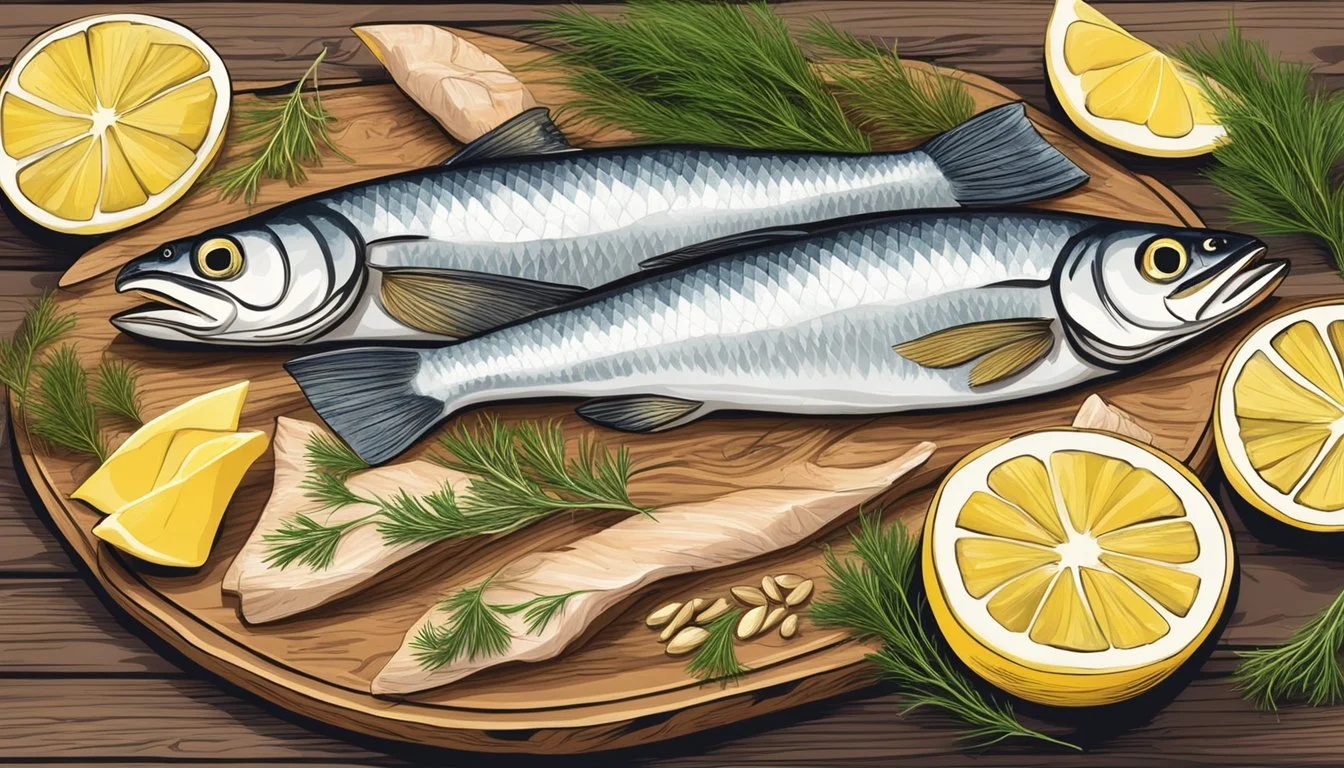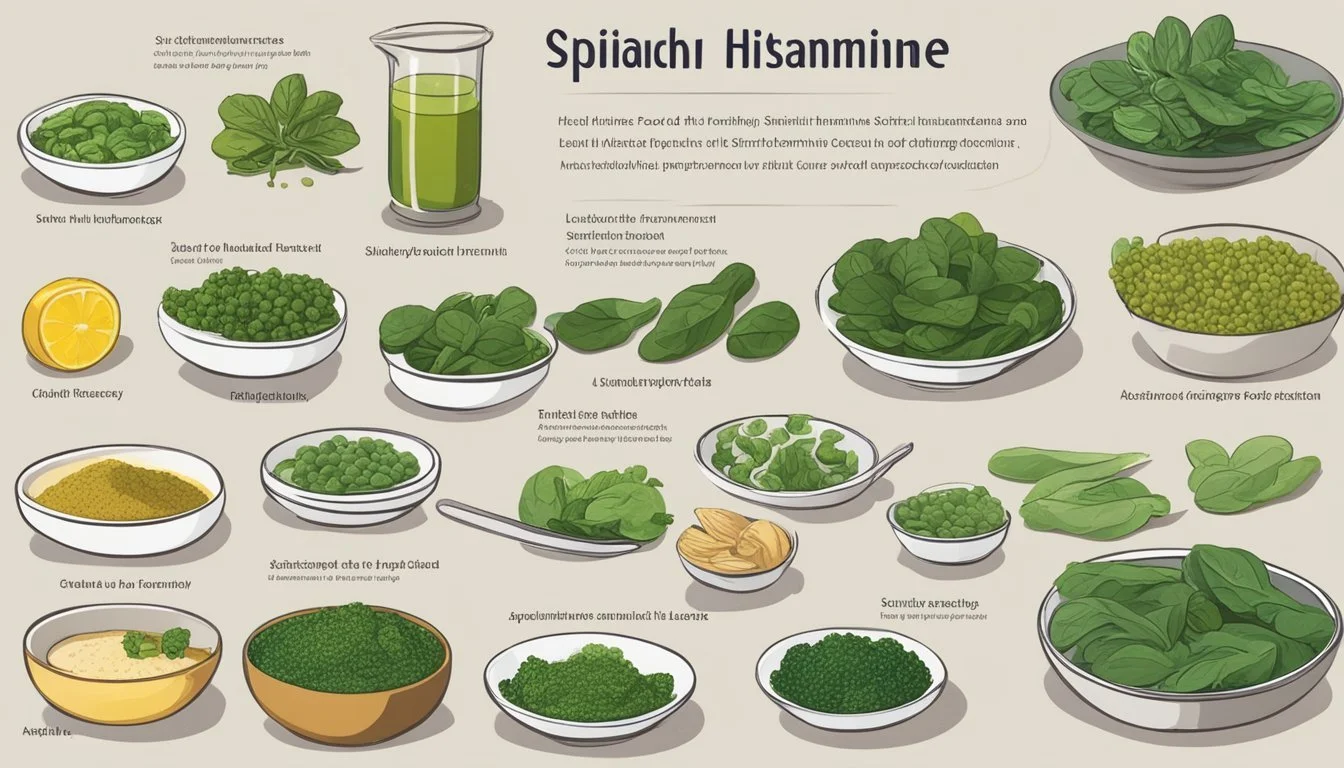10 Common Foods High in Histamine
Comprehensive Guide for Diet Planning
For those managing histamine intolerance, identifying foods high in histamine is crucial to maintaining overall well-being. Understanding which foods to avoid helps in reducing symptoms and leading a more comfortable life. Histamines are naturally occurring chemicals in the body, but when ingested in large amounts through certain foods, they can trigger adverse reactions.
Various foods can contain high levels of histamine or can promote its release, leading to potential discomfort for individuals sensitive to it. By familiarizing themselves with these foods, individuals can better manage their dietary choices and mitigate the impact on their health.
1) Aged Cheese
Aged cheeses are significant sources of histamine and are commonly found on lists of foods high in histamine.
Cheeses like Cheddar, Parmesan, Gouda, and Brie undergo a maturation process that increases their histamine content significantly. The longer the cheese is aged, the higher the histamine levels tend to be.
Storing cheese at higher temperatures further elevates histamine levels. For example, storing cheese at 22°C leads to higher histamine accumulation compared to storage at 4°C.
It is important for those with histamine intolerance to be cautious with aged cheeses. Fresh cheeses like mozzarella, ricotta, and mascarpone generally have lower histamine levels than their aged counterparts.
Cheese products such as processed cheese, cheese slices, and cheese spreads often contain higher histamine levels due to added preservatives and other ingredients. Those needing to avoid high histamine should be aware of these variations.
2) Sauerkraut
Sauerkraut, a popular fermented food, is known for its high histamine content. It is made by fermenting finely chopped cabbage with various lactic acid bacteria.
This fermentation process is what leads to the increase in histamine levels. People with histamine intolerance often need to avoid sauerkraut to prevent symptoms such as headaches, hives, or digestive issues.
Despite its benefits, such as providing probiotics and aiding digestion, sauerkraut's high histamine content may pose challenges for certain individuals.
For those sensitive to histamines, it is advisable to monitor their intake of sauerkraut.
Balancing the need for probiotics with the potential histamine reaction is crucial.
Always opt for fresh sauerkraut over commercial varieties, as it may contain lower histamine levels.
3) Diet Cola
Diet cola is a popular beverage that many people consume daily. This drink, however, is known for containing significant levels of histamine.
The carbonation process and specific ingredients used in diet cola can contribute to its histamine content. For individuals with histamine intolerance, consuming diet cola might lead to various unwanted symptoms.
The artificial sweeteners and preservatives used in diet colas, such as aspartame and sodium benzoate, can also exacerbate histamine-related issues. These additives are known to potentially trigger histamine release in the body.
Those managing a low-histamine diet should be particularly cautious with diet cola. While it may be tempting due to its calorie-free appeal, it can pose risks for those sensitive to histamine.
4) Smoked Fish
Smoked fish is known for its high histamine content.
Foods like smoked salmon, mackerel, and herring contain elevated histamine levels due to the smoking process. This process encourages bacterial growth, which increases histamine production.
Even fish that were low in histamine before smoking can become problematic after exposure to smoke.
Individuals with histamine intolerance often react negatively to smoked fish. Symptoms might include headaches, rashes, or digestive issues.
It's essential for those affected to avoid smoked fish or choose fresh alternatives if they experience adverse reactions. Flash-freezing freshly caught fish shortly after capture can help reduce histamine formation.
5) Tomatoes
Tomatoes are a common dietary staple found in many cuisines worldwide.
They are naturally high in histamine, which makes them problematic for individuals with histamine intolerance.
Fresh tomatoes, tomato sauces, and tomato-based products like ketchup can contribute to elevated histamine levels.
Additionally, histamine content increases when tomatoes are processed or stored for longer periods. This enhancement in histamine occurs significantly in canned tomato products and pastes.
For those sensitive to histamine, it is advisable to avoid or limit the consumption of tomatoes.
It’s worth noting that the impact varies based on individual tolerance levels.
6) Avocados
Avocados are often highlighted for their nutritious profile. They are rich in healthy fats, vitamins, and minerals.
Despite their health benefits, avocados can be problematic for individuals with histamine intolerance. The histamine content in avocados can trigger issues such as headaches, hives, and digestive problems.
Histamine levels in avocados may increase during the ripening process. Overripe avocados are more likely to cause reactions. Choosing fresh avocados without brown spots is recommended for those sensitive to histamine.
It is essential for histamine-sensitive individuals to monitor their symptoms and consume avocados in moderation. Each person's reaction may vary, so careful observation is necessary.
7) Fermented Soy Products
Fermented soy products such as miso, soy sauce, and tempeh are known for their rich umami flavor. These foods undergo a fermentation process that enhances their taste and nutritional value.
However, this process also leads to the formation of histamine.
Miso, a traditional Japanese seasoning, is made from fermented soybeans and grains. It is commonly used in soups and sauces. The fermentation process that produces miso results in significant levels of histamine.
Soy sauce, a staple in many Asian cuisines, is another fermented soy product. It is created through the fermentation of soybeans, wheat, and salt by specific molds and bacteria. This results in high histamine content.
Tempeh, a fermented soybean cake, originates from Indonesia. It is praised for its protein content and is often used as a meat substitute. The fermentation process in tempeh also leads to increased histamine levels.
Including these fermented soy products in the diet can be challenging for those with histamine intolerance. Individuals sensitive to histamine may need to avoid or limit their intake of these foods to prevent symptoms such as headaches, hives, and digestive issues.
Therefore, understanding the histamine content in fermented soy products is crucial for making informed dietary choices.
8) Processed Meats
Processed meats are a significant source of histamines. Items like salami, pepperoni, sausage, and bacon are often cured, smoked, or fermented, which increases their histamine content. These methods of preparation can trigger histamine release or accumulation, potentially leading to intolerance symptoms.
Ham and hot dogs are also culprits. They often contain preservatives that contribute to higher histamine levels. The combination of additives and processing techniques can make these meats problematic for individuals with histamine intolerance.
Luncheon and deli meats should be approached with caution. They commonly include a mix of preservatives and flavor enhancers that can elevate histamine levels. For those with sensitivities, it’s important to opt for fresh, minimally processed alternatives.
9) Spinach
Spinach is a leafy green vegetable often appreciated for its nutritional benefits. Despite its health benefits, spinach is also high in histamine. This means it can potentially cause issues for people with histamine intolerance.
Some individuals may experience symptoms like headaches, skin reactions, or gastrointestinal discomfort after consuming spinach. Histamine intolerance occurs when the body cannot properly break down histamine.
It is important for those sensitive to histamine to monitor their intake of spinach. While it is healthy for most, people with histamine intolerance might need to find alternative greens. Consulting with a healthcare professional can provide personalized advice on managing histamine sensitivity.
10) Overripe Bananas
Overripe bananas can be a concern for individuals with histamine intolerance. The ripening process increases the histamine content in the fruit, making it less suitable for those sensitive to histamines.
Histamine is formed in bananas due to the degradation of proteins as the fruit ripens. This breakdown results in higher histamine levels, which can cause adverse reactions in susceptible individuals.
For those following a low-histamine diet, it might be advisable to avoid overripe bananas. Instead, opt for less ripe bananas, which tend to have lower histamine levels and pose fewer risks of triggering symptoms.
Understanding Histamine in Foods
Histamine plays a crucial role in the body's immune response and can be found in varying amounts in many foods. For those with histamine intolerance, consuming high histamine foods can lead to significant discomfort and adverse effects.
What Is Histamine?
Histamine is a biogenic amine involved in local immune responses and regulating physiological functions in the gut. It acts as a neurotransmitter and is part of the inflammatory response system. It's found naturally in various foods, especially those that are aged or fermented. In the body, histamine is stored in mast cells and is released during allergic reactions.
How Histamine Affects the Body
Histamine triggers symptoms by binding to receptors in different tissues. It can cause dilation of blood vessels, leading to symptoms such as headaches and a runny nose. In the gastrointestinal tract, histamine can increase digestive acid secretion. High levels can cause symptoms like hives, itching, and asthma-like symptoms. These reactions are especially problematic for those with histamine intolerance.
Histamine Intolerance: Symptoms and Causes
Histamine intolerance occurs when the body can't properly break down histamine. This is due to a deficiency or dysfunction in enzymes such as diamine oxidase (DAO) or histamine-N-methyltransferase (HNMT). Common symptoms include headaches, nasal congestion, digestive issues, and skin problems. Causes may include enzyme deficiencies, gut health issues, or high histamine foods like aged cheeses, processed meats, and alcohol. Managing intake of high histamine foods is essential for individuals with histamine intolerance.
Managing a Low-Histamine Diet
Successfully managing a low-histamine diet requires careful planning, knowledge of high-histamine foods to avoid, and suitable alternatives. Consulting with a healthcare professional is also essential for tailored advice.
Tips for Reducing Histamine Intake
Regularly consume fresh foods: Histamine levels increase in foods as they age. Eating fresh meat, poultry, and fish is crucial. Avoid leftovers that are more than 24 hours old.
Limit fermented products: Fermented foods like sauerkraut, yogurt, and aged cheeses are high in histamine. Opt for non-fermented alternatives where possible.
Freeze foods: Immediately freezing portions of fresh meals can help reduce histamine formation. Just ensure they are consumed shortly after thawing.
Pay attention to food labels: Some preservatives and additives can trigger histamine release. Avoid foods with additives like sulfites and benzoates.
Alternatives to High-Histamine Foods
Fresh fruits and vegetables: Integrate fruits like apples, pears, and watermelons. Vegetables such as carrots, zucchini, and bell peppers are good choices.
Meat substitutes: Instead of aged meats, fresh cuts of poultry and fish are preferable. Fresh, home-cooked eggs are also suitable.
Grains and starches: Quinoa, rice, and oats are low-histamine and offer nutrition without triggering symptoms.
Dairy alternatives: Opt for milk substitutes such as almond, coconut, or rice milk. These are generally low in histamine and suitable for a variety of recipes.
High-Histamine Food Low-Histamine Alternative Aged cheese Fresh mozzarella, ricotta Tomatoes Carrots, bell peppers Processed meats Fresh poultry, fish Fermented products Freshly cooked vegetables
Consulting with a Healthcare Professional
Individualized advice: Different individuals can have varying tolerance levels to histamine. A healthcare professional can provide personalized dietary recommendations.
Monitoring symptoms: Regular check-ups can help in tracking symptoms and adjusting the diet as needed.
Nutritional balance: Ensuring that the diet remains nutritious is vital. Professionals can help balance nutrient intake while adhering to a low-histamine regimen.
Safety: Guidance from a healthcare professional ensures that the diet changes do not inadvertently lead to other nutritional deficiencies or health issues.











